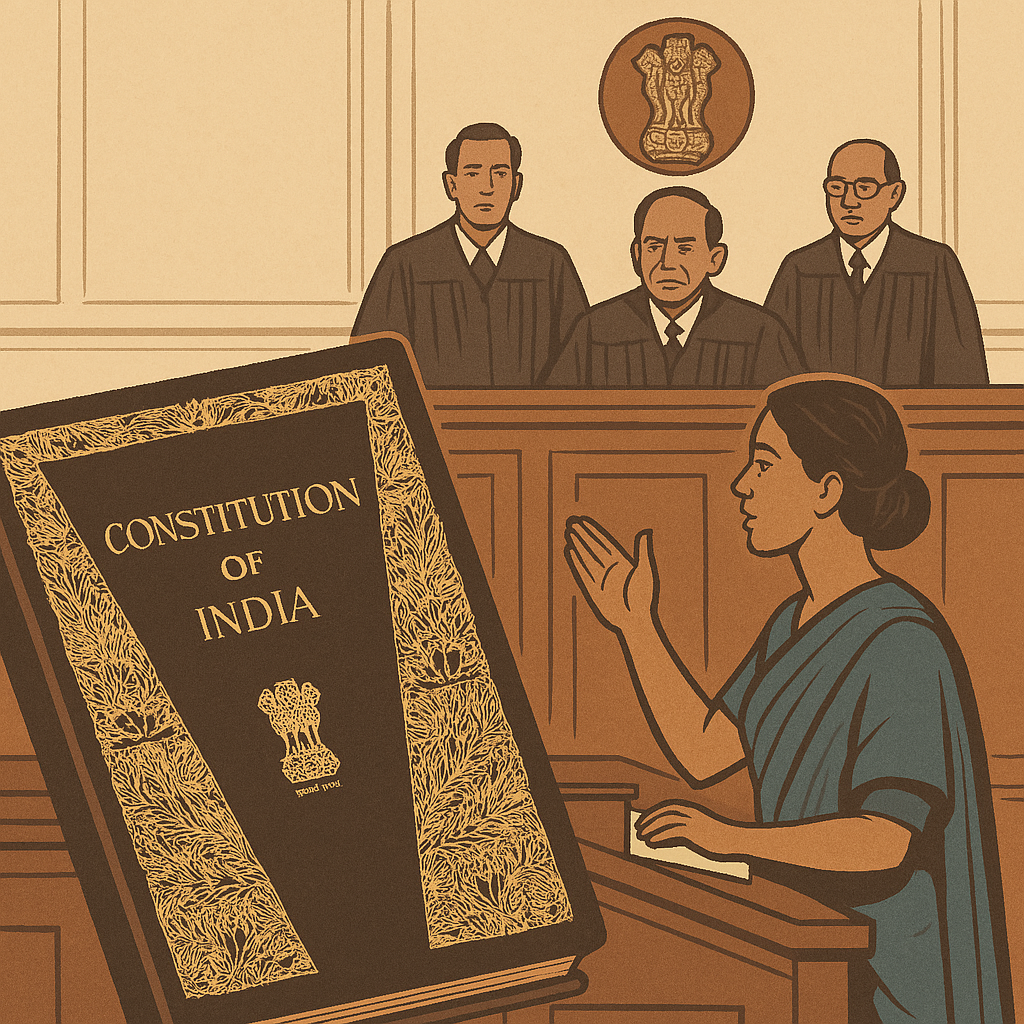Gender equality is deeply rooted in the Indian Constitution through Articles 14, 15, and 16, but achieving it requires ongoing efforts through laws, court rulings, and societal change.
📚 Introduction
India’s Constitution is a progressive and rights-based document, and one of its most powerful commitments is to gender equality. From equal protection under law to non-discrimination, the Constitution promises a society where men, women, and all genders can enjoy equal rights and opportunities.
But how far have we come in turning this constitutional promise into reality?
📜 Key Constitutional Provisions
-
Article 14 – Right to Equality
Guarantees equality before law and equal protection of the laws to all persons.
-
Article 15 – Prohibition of Discrimination
Prohibits discrimination on grounds of religion, race, caste, sex, or place of birth.
🔸 Article 15(3) allows the state to make special provisions for women and children, enabling affirmative action.
-
Article 16 – Equality in Public Employment
Provides equal opportunity in public jobs, regardless of gender.
-
Directive Principles (Articles 39, 42, 46)
– Guide the state to ensure equal pay, maternity benefits, and promotion of women’s welfare.
🧑⚖️ Landmark Supreme Court Cases on Gender Equality
-
Air India v. Nargesh Meerza (1981)
– Struck down service rules that forced air hostesses to retire at 35 or upon marriage/pregnancy. Held to be discriminatory and unconstitutional. -
Vishaka v. State of Rajasthan (1997)
– Laid down guidelines against sexual harassment at the workplace, citing Articles 14, 15, 19, and 21. -
Joseph Shine v. Union of India (2018)
– Decriminalized adultery, declaring it discriminatory and violative of women’s dignity and autonomy. -
Indian Young Lawyers Association v. State of Kerala (2018)
– Allowed entry of women into the Sabarimala temple, holding that religious practices cannot override constitutional rights. -
Anuj Garg v. Hotel Association of India (2008)
– Struck down laws that barred women from working in bars, saying protective discrimination cannot become paternalism.
⚖️ Special Laws Advancing Gender Equality
-
Maternity Benefit Act, 1961
-
Protection of Women from Domestic Violence Act, 2005
-
Sexual Harassment of Women at Workplace Act, 2013
-
Equal Remuneration Act, 1976
These laws, backed by constitutional values, safeguard women’s rights in public and private spheres.
👩⚖️ Beyond the Binary: Inclusion of Other Genders
In NALSA v. Union of India (2014), the Supreme Court recognized transgender persons as the “third gender”, extending constitutional protections under Articles 14, 15, and 21 to all gender identities.
“The Constitution must be interpreted in a manner that removes gender inequality in all its forms.”
📊 Challenges That Persist
-
Gender pay gap and underrepresentation in leadership roles
-
Societal norms and patriarchy limiting women’s choices
-
Implementation gaps in legal protections
-
Gender-based violence, online and offline
-
Lack of representation of LGBTQ+ persons in policy-making
🌈 Role of the Judiciary
The Indian judiciary has played a critical role in interpreting gender equality not just as formal sameness, but as substantive justice. Courts have increasingly emphasized dignity, choice, and bodily autonomy as essential aspects of gender justice.
🧩 Conclusion
While the Indian Constitution guarantees gender equality, the journey from legal rights to lived reality is ongoing. Landmark judgments and progressive laws are crucial steps, but lasting change needs social reform, education, and collective action.
In the words of Justice D.Y. Chandrachud:
“The Constitution empowers, but it is society that must transform.”

